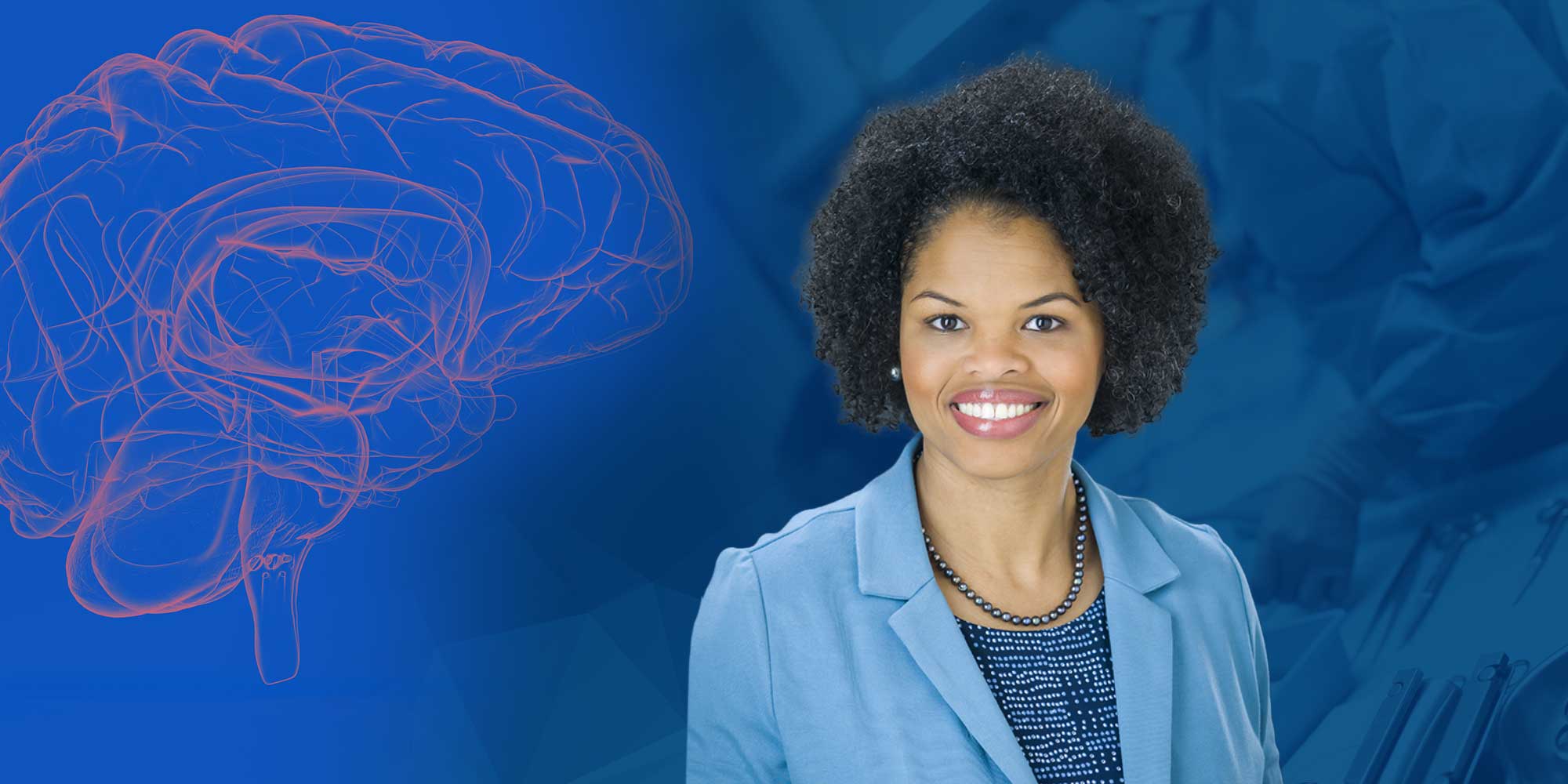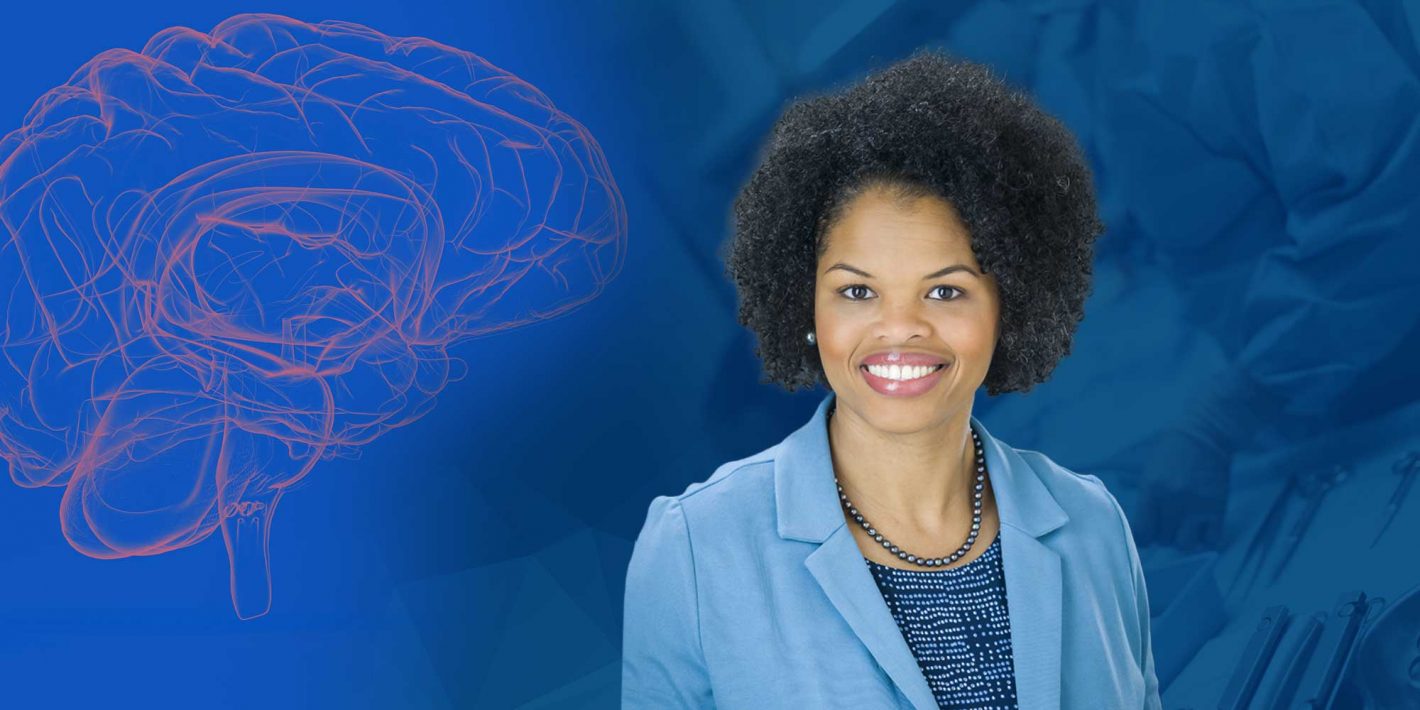
Lakiesha Williams, Ph.D.
Dura mater (“dura” for short) is the tough outermost sheath that covers the spinal cord and brain, and it serves to contain cerebral spinal fluid (CSF) in the cranial cavity. Of primary concern to researchers are clinical complications caused by any leakage of CSF through dural grafts after a surgical intervention.
Funded by a $1.7 million R01 award from the National Institute of Neurological Disorders & Stroke, a research arm of the National Institute of Health, a multidisciplinary University of Florida research team headed by Lakiesha Williams, Ph.D., associate professor in the J. Crayton Pruitt Family Department of Biomedical Engineering, will test what they hope will be a dural graft option less likely to succumb to structural compromise and harmful immunological outcomes.
Dr. Williams and her team hypothesize that “xenogeneic” grafts — those consisting of material from another species — with multiple extracellular matrix (ECM) proteins will perform better than their naturally derived commercial counterpart in a clinical setting thanks to an innovative formula that has exhibited improved mechanical and immunological response in vitro and in vivo.
“Dural grafts are used routinely in neurosurgical procedures to augment native dura, the structure that covers the brain,” explained Dr. Justin Hilliard, M.D., assistant professor in the Lillian S. Wells Department of Neurosurgery at UF. “Failure of dural grafts that result in cerebrospinal fluid leak can cause headaches, need for further surgery, and in some instances, life-threatening meningitis. In collaboration with Dr. William’s biomedical engineering lab, Dr. Erika Moore’s material science lab and my lab in neurosurgery, we’re working on enhanced dural substitutes that can reduce post-operative failure of dural grafts, resulting in reduced morbidity and improved patient outcomes.”
Erika Moore, Ph.D., holder of the Rhines Rising Star Larry Hench Assistant Professor of Materials Science & Engineering at UF, is complementing Dr. Williams’ efforts by investigating how the body responds to the implanted materials in this clinical context. “We will be characterizing the immunological response using immunohistochemistry and flow cytometry from the samples Dr. Williams’ lab collects,” she explained.
Dr. Williams’ lab will help build the extracellular matrix (ECM), a nexus which helps non-native cells attach to and communicate with other dural cells in close proximity, which is fundamental to cell growth, movement and repairing damaged tissue, also making them resistant to tearing where adhesions and scarring are caused by brain trauma and surgeries.
While a broad selection of dural grafts presently exists, Dr. Williams said no consensus has been reached on which is best suited to avoid duramater ruptures and adverse immunological responses. But their approach to identifying an industry-standard graft intentionally zeroes in on the nature and functionality of the dura itself, a perspective too often overlooked by other investigators.
“Historically, as engineers, we see the dura like paint on an airplane — most see cosmetics, but we see functionality,” Dr. Williams said. “With all the available data and mathematical brain models, we don’t consider the dura enough, but it’s important to understand it’s a living structure. There is vasculature for blood flow, and recent studies indicate there is some immune exchange between the dura and the brain which may aid in recovery. Our question is, when it must be patched with a graft, is the function the same? Is there an immunological function toward recovery in brain trauma?”
Dr. Moore praised the convergence of eminent bioengineering, materials science and neurosurgery expertise that is answering those questions.
“The unique ability to connect and combine lab expertise is truly a hallmark of UF ,” she said. “We are capable of attacking problems from multiple perspectives thanks to our collaboration taking place right in each other’s backyard.”
